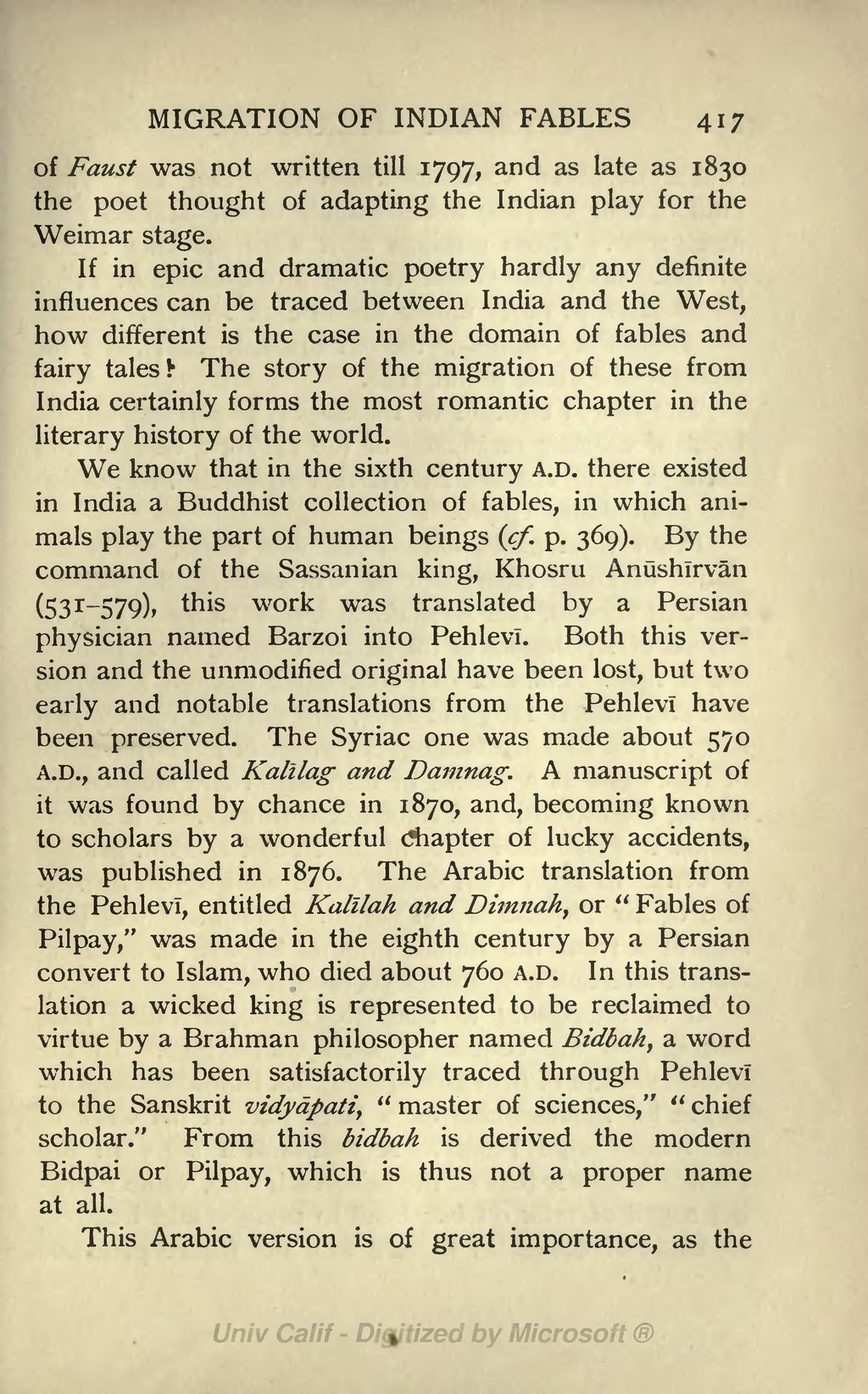of Faust was not written till 1797, and as late as 1830 the poet thought of adapting the Indian play for the Weimar stage.
If in epic and dramatic poetry hardly any definite influences can be traced between India and the West, how different is the case in the domain of fables and fairy tales! The story of the migration of these from India certainly forms the most romantic chapter in the literary history of the world.
We know that in the sixth century A.D. there existed in India a Buddhist collection of fables, in which animals play the part of human beings (cf. p. 369). By the command of the Sassanian king, Khosru Anūshīrvān (531-579), this work was translated by a Persian physician named Barzoi into Pehlevī. Both this version and the unmodified original have been lost, but two early and notable translations from the Pehlevī have been preserved. The Syriac one was made about 570 A.D., and called Kalīlag and Damnag. A manuscript of it was found by chance in 1870, and, becoming known to scholars by a wonderful chapter of lucky accidents, was published in 1876. The Arabic translation from the Pehlevī, entitled Kalīlah and Dimnah, or "Fables of Pilpay," was made in the eighth century by a Persian convert to Islam, who died about 760 A.D. In this translation a wicked king is represented to be reclaimed to virtue by a Brahman philosopher named Bidbah, a word which has been satisfactorily traced through Pehlevī to the Sanskrit vidyāpati, "master of sciences," "chief scholar." From this bidbah is derived the modern Bidpai or Pilpay, which is thus not a proper name at all.
This Arabic version is of great importance, as the
